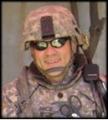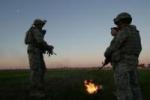Based on this:
1. What does their model of local governance look like ?
2. What does their model of the local justice system look like (judges, prosecutors and police in the criminal sector; judges and "juries" - shuras & jirgas - in the civil sector) ?
3. How does that model interface with the national government (at district, province and national levels) ?
4. How does that model interface with local and regional "power people" (warlords in UnkindSpeak) ?
5. Is this an "all or nothing" model (all being Astan's some 40,000 villages), or would a more modest approach be taken ? If the latter, what portions of Astan would be the better choices for implementation ? See
this post in another thread for links to some possibly relevant maps.
6. Who would implement the local governance model (e.g., military, civilian; e.g., US, Astanis - in what mix in this laudable political effort) ?
Regards
Mike








Bookmarks